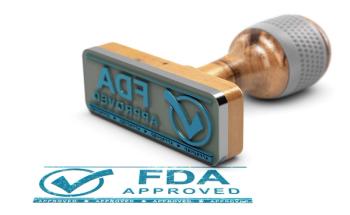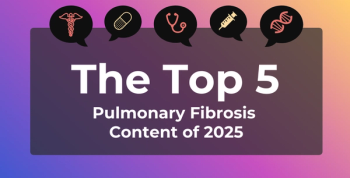
Wake-Promoting Drugs May Benefit Treatment-Experienced Patients With EDS, OSA
Many patients experience excessive daytime sleepiness (EDS) despite treatment for obstructive sleep apnea (OSA) and may benefit from wake-promoting drugs.
Patients with excessive daytime
EDS can be reduced with continuous positive airway pressure (CPAP), the primary mode of addressing OSA. Many patients, however, continue to experience sleepiness despite adequate treatment. Such patients may experience improved quality of life (QoL) by using agents that inhibit reuptake of dopamine (eg, modafinil [Provigil], armodafinil [Nuvigil]) or of both dopamine and norepinephrine (solriamfetol [Sunosi]), the authors said in
OSA results from repetitive collapse of the upper airway, causing intermittently low oxygen levels and impaired ventilation during sleep. The condition is diagnosed through a sleep study or findings of predominantly obstructive respiratory events such as breathing interruptions, shallow breathing, or respiratory effort–related arousals.
Diagnostic criteria specify at least 15 respiratory events per hour, or at least 5 events in combination with typical OSA symptoms such as snoring, fatigue, and EDS, as well as comorbid conditions such as hypertension, coronary artery disease, or stroke, according to the authors. EDS is associated with an increased risk of vehicle and occupational accidents and a higher prevalence of depression and anxiety.
EDS has been reported to affect 40.5% to 58.0% of patients with OSA. An estimated 9.0% to 22.0% continue to experience EDS despite adequate CPAP treatment. In addition, those with pretreatment EDS, diabetes, heart disease, and lower respiratory disturbance index at baseline had greater odds of having EDS after 6 months of CPAP use, the authors said.
Modafinil, armodafinil, and solriamfetol are prescribed to promote wakefulness. Modafinil and armodafinil bind to the dopamine transport and inhibit dopamine reuptake, while solriamfetol binds to dopamine and norepinephrine transports and inhibits both reuptake inhibitors.
Although pharmacologic treatment has benefited patients, studies are needed to determine if they have any effect on brain changes. More specific tests could improve overall clinical management, the authors said.
Animal studies have shown repeated episodes of hypoxia and repetitive short sleep interruptions to be associated with neuronal injury and degeneration in wake-promoting brain regions, the authors said. Intermittent hypoxia also has been shown to be associated with oxidative injury that, in turn, is associated with wake impairments. Even in models where mice have had recovery periods of 2 weeks to 6 months, neuronal and wake deficits have persisted, suggesting that the intermittent episodic hypoxia and sleep fragmentation associated with OSA may cause irreversible brain damage and impaired wakefulness.
In humans, neuroimaging cannot distinguish cause from effects of OSA. However, the authors said, there is consensus that white matter alterations exist in patients with OSA and EDS. Studies indicate possible myelin and/or axonal damage. White matter structural differences may contribute to residual EDS in OSA patients.
Findings on alterations in patients’ gray matter has been mixed, the authors said. However, previous studies show that after 3 months of CPAP treatment, overall gray matter significantly increases, with patients showeing significant improvement in EDS and on measures of executive function, attention, short- and long-term memory, QoL, and mood.
Diagnosis should entail a review for underrecognized comorbid conditions such as sleep deprivation, hypersomnia, narcolepsy, hypothyroidism, psychiatric illness, and illicit drug use. Clinicians should also assess whether a patient is performing CPAP treatment properly. There are objective and self-reported assessment of cognition or alertness in evaluating EDS.
“Future studies controlling for data acquisition, analysis techniques, and confounding patient characteristics are needed to elucidate current findings,” the authors concluded.
Reference
Lal C, Weaver TE, Bae CJ, Strohl K. Excessive daytime sleepiness in obstructive sleep apnea. Mechanisms and clinical management. Ann Am Thorac Soc. 2021;18(5):757-768. doi:10.1513/AnnalsATS.202006-696FR
Newsletter
Stay ahead of policy, cost, and value—subscribe to AJMC for expert insights at the intersection of clinical care and health economics.







































